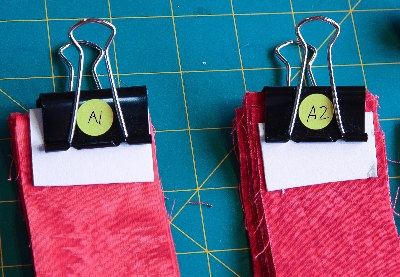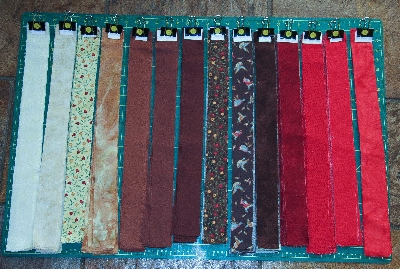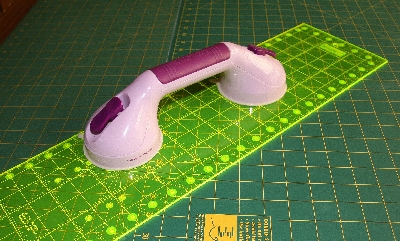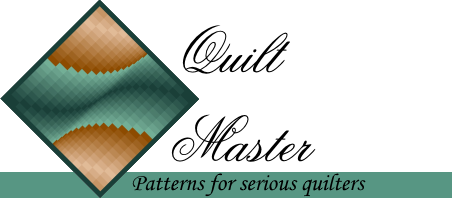Cutting the Strips
- Each fabric should be given a colour code in your bargello pattern. After finishing cutting the strips of
a colour, cut a small piece of scrap and stick it onto a reference sheet. Quilt Master patterns have that
reference sheet as part of the pattern. This reference will prove vital as you do the rest of the quilt.
- It is very important to cut accurately.
- Do not trim the material. Having strips longer than 20.5″ can make sewing and strip cutting easier.
- If you are starting with full width material (42″ wide as purchased), then begin by cutting it in half length-
wise (parallel to the selvedge), to produce fabric that is around 21–22″ wide. - Always cut at right angles to the selvedges
If cutting a fat quarter that has had the selvedges removed, then cut parallel to the longest side.. This is tremendously important; if you get it wrong you will find yourself having to buy more material, or do some seriously difficult mathematics and piecing!
- As you cut the strips, make sure you put them in piles of the same colour. Clip them together using labelled butterfly clips with white card to protect the fabric. This makes it easy to move the piles around and to put the fabric away between sewing sessions.


Hints for Accurate Cutting
- Don’t cut when tired!
- Always use a new blade. An old blade will damage your cutting board and shred rather than cleanly cut
the fabric. - Make sure you have either a non-slip ruler, or buy non-slip plastic (available from most quilting stores) and
apply it to the reverse side of your ruler. - Use the same ruler for the whole job.
- Do not cut more than two layers at once.
- Make sure that you hold the ruler down at all times. If you need to move your hand ‘walk’ it along the
ruler, rather than lift it off
Ergonomics
- It can be useful to attach a temporary handle to your template; this can prevent stress to the hand holding
your ruler down.

- Always use a new blade, using a blunt blade can put undue strain on your wrist and shoulder.
- Try out several different types of roller cutter until you find one that suits you.
- Make sure your cutting table is a good height.
- Stop if it starts to hurt!
